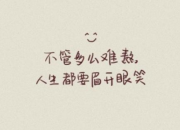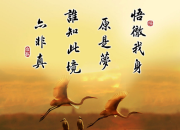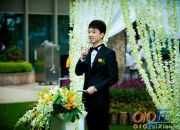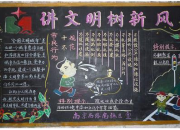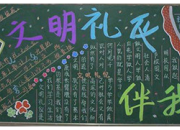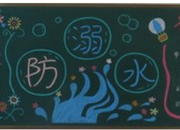南京景点英文导游词
时间:2021-08-31南京景点英文导游词
引导语:南京是我国著名的旅游城市之一,那么有关南京景点的.英文导游词要怎么写?接下来是小编为你带来收集整理的文章,欢迎阅读!
南京景点英文导游词一
Dr. Sun Yatsen, also named Sun Wen or Sun Zhongshan, is considered as the father of the Chinese democratic revolution. Born in a peasant family in Guangdong Province in 1866, he had his primary education in Honolulu, Hawaii sponsored by his elder brother from 1878 to 1883. He was so sad when he saw the poverty of the country upon his return. China had been a super power for centuries. But since the middle of Qing Dynasty in the 1800’s, China began to decline, which owed a great deal to the corruptions and incompetence of the Qing government. Foreign invasions and peasant rebellions made it even worse. The Opium War in 1840 ended with the “Treaty of Nanjing”. China was forced to pay an indemnity of 21 million silver dollars and cede Hong Kong to the Great Britain and open 5 free port cities to the westerners, which were Guangzhou, Xiamen, Fuzhou, Ningbo and Shanghai. Following were the wars again launched by France in 1883 and Japan in 1894. The Chinese people lived in a miserable life. They were referred to the “sick man of the Orient” by the westerners. Dr. Sun Yatsen dreamed to save the nation by practicing medicine and that led him to Hong Kong to learn medicine when he was 21 years old. However, it did not work. The reality made him give up his medical career in his hometown and Macao but turn to politics in 1893.
From then on, he kept petitioning to the Qing government for reforms but was never responded. At great disappointment, he left the country later and went canvassing extensively in the United States of America, Europe and Japan, trying to win the sympathy and support from the overseas Chinese. With the funds raised, he organized “Revive China League” - China’s first bourgeois organization. The following 1905 witnessed the founding of the “Chinese Revolutionary League” headed by Dr. Sun Yatsen, a party with a clear-cut program of “Expel Tartars, Restore China, Establish Republic & Equalize Land.” Dr. Sun Yatsen also put forth 3 democratic principles of “Nationalism, Democracy & People’s Livelihood” as his political goal. The armed movements against the Qing government took place continuously.
The most important event following was the 1911 Revolution in Wuhan led by Dr. Sun Yatsen, which drove the last emperor of the Qing Dynasty out of the Forbidden City in Beijing, marking the end of the old dynastic system in China. In the same year, the representatives of 17 provinces met in Nanjing and elected Dr. Sun Yatsen president of the provisional government of the Republic of China. On January 1, 1912 it was in Nanjing where the first republic in Chinese history was founded and Dr. Sun Yatsen inaugurated his presidency.
Unfortunately the new republic was threatened by powerful warlords in the north. To avoid political crisis and save the republic, Dr. Sun Yatsen compromised conditionally with the major northern warlord named Yuan Shikai who had been pursuing the national power for a long time. He resigned at the end of March 1912, but never stopped pursuing his goal.
Soon after that, China went into chaotic civil wars again. The situation led to a series of movements like “the Second Revolution,” “Save the Republic,” “Restore the Legislation” and “the Northern Expeditions” in the following years. Dr. Sun Yatsen spent most of his time dealing with warlords. Not until 1921, Dr. Sun Yatsen resumed his presidency in Guangzhou. At the First National Congress of the Chinese Kuomintang in 1924, he adopted the policy of “Alliance with Russia and Communists, Assistance to Peasants and Workers” and officially acknowledged the cooperation between the Nationalist Party and Communist Party in running the government.
In November of 1924, Dr. Sun Yatsen, despite his poor health, made an expedition to the north with his ambition to eliminate warlords, expel imperialists and abrogate unequal treaties. He was warmly greeted by thousands of people upon his arrival in Beijing. He met with many politicians and warlords, trying to persuade them to get united to build a new China. But the result did not look optimistic. He became very sick due to hard work and had to be hospitalized. The diagnosis turned out he was suffering an advanced-stage liver cancer. When he realized it would not be very long for him to stay in this world, he dictated his assistant 3 last wills, one to his party, one to the Russian government and the other to his wife Madam Song Qingling. On March 12, 1925 Dr. Sun Yatsen passed away in Beijing Union Hospital.
Dr. Sun Yatsen is a great man because he devoted 40 years of his life to pursuing his dream to overthrow the feudal monarchy and build an untied democratic China.
Why was Dr. Sun Yatsen buried in Nanjing instead of in his hometown or Beijing where he died? The mausoleum site was first recommended to Dr. Sun Yatsen by the abbot of Linggu Temple for its good geomantic omen. One day in April, 1912 when he went hunting to the site with his friends, Dr. Sun Yatsen was really so amazed by the beautiful environment that he wished the people would allow him to be buried there after his death. He expressed this desire again in his sickbed in 1925.
Dr. Sun Yatsen’s Mausoleum is designed in the shape of a liberty bell, intending to remind people never to get self-contented. The whole architecture, from the gateway, to the main entrance, tablet pavilion, memorial hall and the tomb vault, lies on the north-south axis with 392 steps and 10 platforms in between. The buildings are all constructed with natural granite and marbles and covered by blue glazed-tile roofs.
Opposite to the bronze incense-burner off the square, stands the 12-metre high gateway of three arches with Dr. Sun Yatsen’s handwriting “Fraternity” carved on its front top. The 480-meter long tomb avenue, lined with pine, gingko and maple trees, leads to the main entrance. Dr. Sun Yatsen’s motto “The World Belongs to the People” can be seen right above the door in the middle. Walking through it, the first building you will see is the tablet pavilion which houses a huge tombstone. The tombstone is engraved with “Premier Dr. Sun is buried here by the Chinese Nationalist Party on June 1, 1929.” From there, a panoramic view of the memorial hall can be obtained. However, there are still 290 steps to go before you reach the memorial hall on the top. The memorial hall stands 73.33 meters above the ground. In the center of the memorial hall sits the Italian white marble statue of Dr. Sun Yatsen mounted on a pedestal carved in bas-relief by a Polish sculptor. The surrounding walls are inscribed with the national constitution written by Dr. Sun Yatsen. Beyond the memorial hall is the tomb vault. Standing by the pool inside, if you look down, you bow to see Dr. Sun Yatsen’s reclining marble statue with his body buried 5 meters underneath. If you look up, you find the emblem of the Nationalist Party on the ceiling.
When you wrap up your homage tour and step down, you will not only enjoy a bird’s-eye view of beautiful Nanjing, but also feel totally relieved because you do not see any more those 392 steps you have conquered. Not until then, you will not understand how great Dr. Sun Yatsen is.

